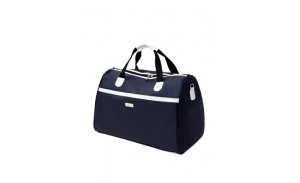How to Pack a Duffel Bag
It isn't always easy to efficiently fill the large, flexible space within a duffel bag. There are no rigid boundaries or separate compartments, so you will need to create your own structure. Put strong items on the edges for support, and keep fragile items sheltered within. Build layers and pockets from the things that you pack. Don't be afraid to rearrange the contents until they fit well!Steps
1Packing Efficiently
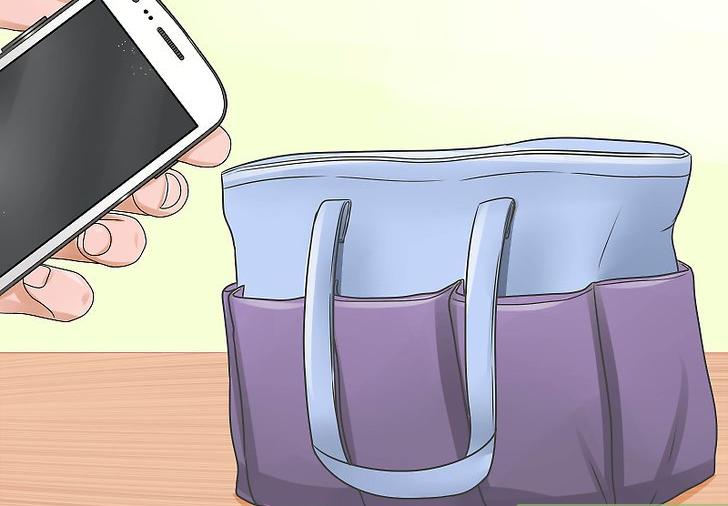 1Pack only what you need. Make a list, and check off items as you pack them so that you know exactly what you do and do not have. Separate your list into categories: e.g. clothing, electronics, food, toiletries, documents, and gear. Consider the weather, the duration of the trip, and the range of expected activities. Make sure that you will be prepared for every situation that you will reasonably encounter – but be careful not to over-pack.
1Pack only what you need. Make a list, and check off items as you pack them so that you know exactly what you do and do not have. Separate your list into categories: e.g. clothing, electronics, food, toiletries, documents, and gear. Consider the weather, the duration of the trip, and the range of expected activities. Make sure that you will be prepared for every situation that you will reasonably encounter – but be careful not to over-pack. 2Pack heavier items first. You'll want to carry and store your duffel bag zipper-side up, so it's important to keep the large objects on the bottom. If you pack light or fragile things into the bottom of the duffel compartment, they will be crushed by the weight of the items above them.
2Pack heavier items first. You'll want to carry and store your duffel bag zipper-side up, so it's important to keep the large objects on the bottom. If you pack light or fragile things into the bottom of the duffel compartment, they will be crushed by the weight of the items above them. 3Pack to avoid wrinkling. Duffel bags are especially prone to compressing and creasing loose clothing. If everything is jumbled together, it can easily leave its mark on your garments. Try to arrange things into compartments, and fold in a way that limits creasing.[1]
3Pack to avoid wrinkling. Duffel bags are especially prone to compressing and creasing loose clothing. If everything is jumbled together, it can easily leave its mark on your garments. Try to arrange things into compartments, and fold in a way that limits creasing.[1] 4Stuff lightweight clothing items inside your shoes. This might include gloves, socks, undergarments, and other thin fabrics. In addition to saving space, this method should help your shoes hold their shape by reinforcing the walls. In general: for the sake of efficiency, pack anything light and compressible inside of anything heavy and hollow.[4]
4Stuff lightweight clothing items inside your shoes. This might include gloves, socks, undergarments, and other thin fabrics. In addition to saving space, this method should help your shoes hold their shape by reinforcing the walls. In general: for the sake of efficiency, pack anything light and compressible inside of anything heavy and hollow.[4]2Traveling with a Duffel Bag
 1Face the zippered side up. This is especially important if you've packed the heaviest items on the bottom and the most fragile items in the center. The amorphous walls of the duffel will not provide much protection for the contents. Thus, you will need to need to handle your bag with particular care. Avoid stacking heavy items on top of the duffel, and try to keep it from taking too much wear.
1Face the zippered side up. This is especially important if you've packed the heaviest items on the bottom and the most fragile items in the center. The amorphous walls of the duffel will not provide much protection for the contents. Thus, you will need to need to handle your bag with particular care. Avoid stacking heavy items on top of the duffel, and try to keep it from taking too much wear. 2Keep need-to-access belongings near the top. It can be a pain to dig through the depths of your duffel bag just to find one item – especially if you are using a particularly large bag. If you think that you might need to access anything over the course of a given day, take care to arrange that thing in an easily-accessible position near the zipper. On the other hand: items near the top of the bag will be easy picking for would-be duffel thieves. Pack your most important and sensitive belongings deep within the bag, ideally inside socks or other containers.
2Keep need-to-access belongings near the top. It can be a pain to dig through the depths of your duffel bag just to find one item – especially if you are using a particularly large bag. If you think that you might need to access anything over the course of a given day, take care to arrange that thing in an easily-accessible position near the zipper. On the other hand: items near the top of the bag will be easy picking for would-be duffel thieves. Pack your most important and sensitive belongings deep within the bag, ideally inside socks or other containers. 3Repack when necessary. Over the course of a trip, you may find that your belongings become jumbled and mussed from the day-to-day demands of living out of a duffel. Sometimes, you will need to take heavy items from the bottom of the bag, which can disturb the carefully-layered strata of clothing and travel necessities. Do not hesitate to take everything out of your bag and reorder it! It won't take long, and the belongings within will be much safer from the wear and tear of travel.
3Repack when necessary. Over the course of a trip, you may find that your belongings become jumbled and mussed from the day-to-day demands of living out of a duffel. Sometimes, you will need to take heavy items from the bottom of the bag, which can disturb the carefully-layered strata of clothing and travel necessities. Do not hesitate to take everything out of your bag and reorder it! It won't take long, and the belongings within will be much safer from the wear and tear of travel. 4Compartmentalize. Consider using smaller, also-amorphous bags to divide up the space within your duffel. Use a bag for your toiletries, a bag for your food, and a bag for your dirty laundry. This way, you won't need to rifle through the main compartment each time you need something. You can take out the appropriate "compartment bag," then quickly sort out the needed item.[5]
4Compartmentalize. Consider using smaller, also-amorphous bags to divide up the space within your duffel. Use a bag for your toiletries, a bag for your food, and a bag for your dirty laundry. This way, you won't need to rifle through the main compartment each time you need something. You can take out the appropriate "compartment bag," then quickly sort out the needed item.[5]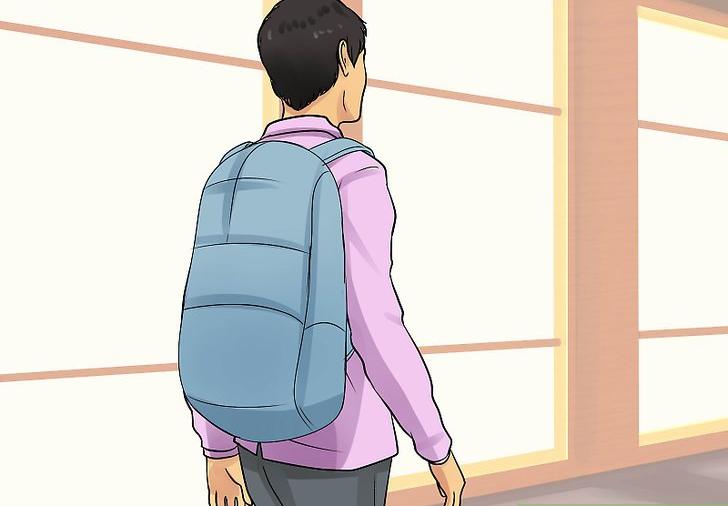 5Bring a day-pack for day trips. If you'll be staying in one place and heading out for day-trips, take along a smaller bag so that you don't need to lug your duffel everywhere. Stuff the day-pack into your duffel. Each day, leave the large duffel in your place of lodging, and fill the day-pack with only the essentials.
5Bring a day-pack for day trips. If you'll be staying in one place and heading out for day-trips, take along a smaller bag so that you don't need to lug your duffel everywhere. Stuff the day-pack into your duffel. Each day, leave the large duffel in your place of lodging, and fill the day-pack with only the essentials.3Choosing a Bag
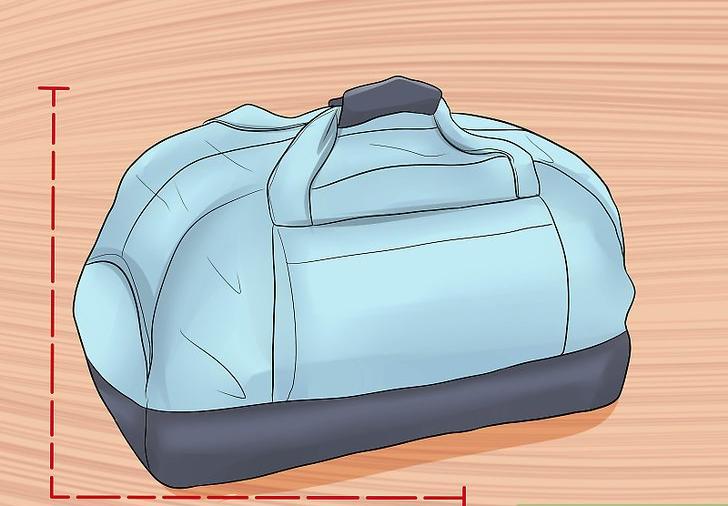 1Buy a duffel bag of an appropriate size. Some duffels offer a huge capacity—as many as 130 liters (34.3 US gal) of space—while others are much smaller and more portable. Before you buy, consider what you'll be storing in this duffel bag, and where you'll be going. Check online and at local outdoor supply stores to track down the best bag for you.[6]
1Buy a duffel bag of an appropriate size. Some duffels offer a huge capacity—as many as 130 liters (34.3 US gal) of space—while others are much smaller and more portable. Before you buy, consider what you'll be storing in this duffel bag, and where you'll be going. Check online and at local outdoor supply stores to track down the best bag for you.[6]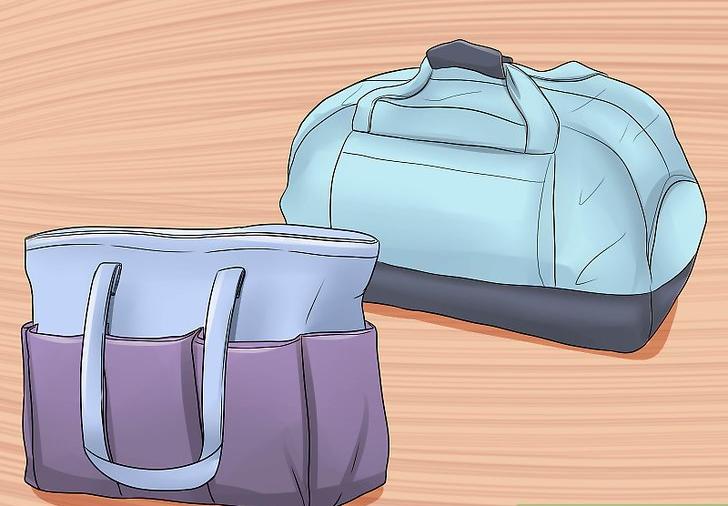 2Pick your pockets. Some duffel bags are very simple: just the one large main compartment, with no frills or extra features. Other bags feature various inner and outer pockets to more easily separate your things. Remember that more volume means more weight!
2Pick your pockets. Some duffel bags are very simple: just the one large main compartment, with no frills or extra features. Other bags feature various inner and outer pockets to more easily separate your things. Remember that more volume means more weight!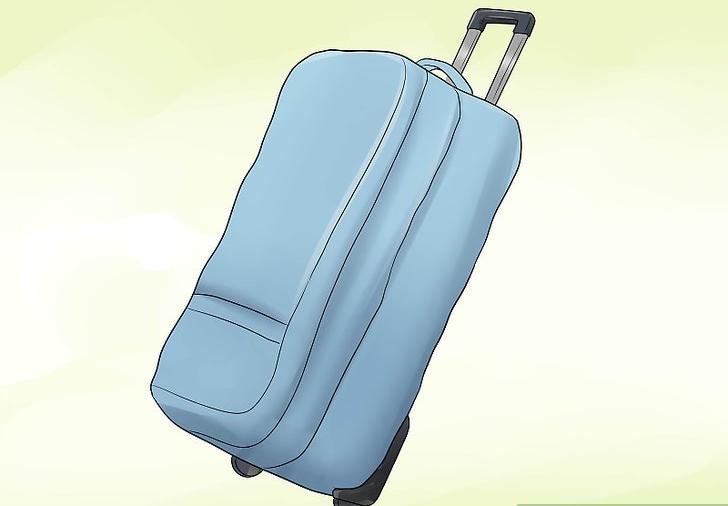 3Consider using a rolling duffel bag. If you're bringing a large volume of belongings, then your duffel might be too heavy to comfortably carry for any length of time. You can buy a duffel bag with wheels, or you can install wheels yourself with a bit of DIY craftsmanship. Be aware, however, that wheels will add up to several pounds of extra weight.[9]
3Consider using a rolling duffel bag. If you're bringing a large volume of belongings, then your duffel might be too heavy to comfortably carry for any length of time. You can buy a duffel bag with wheels, or you can install wheels yourself with a bit of DIY craftsmanship. Be aware, however, that wheels will add up to several pounds of extra weight.[9]

